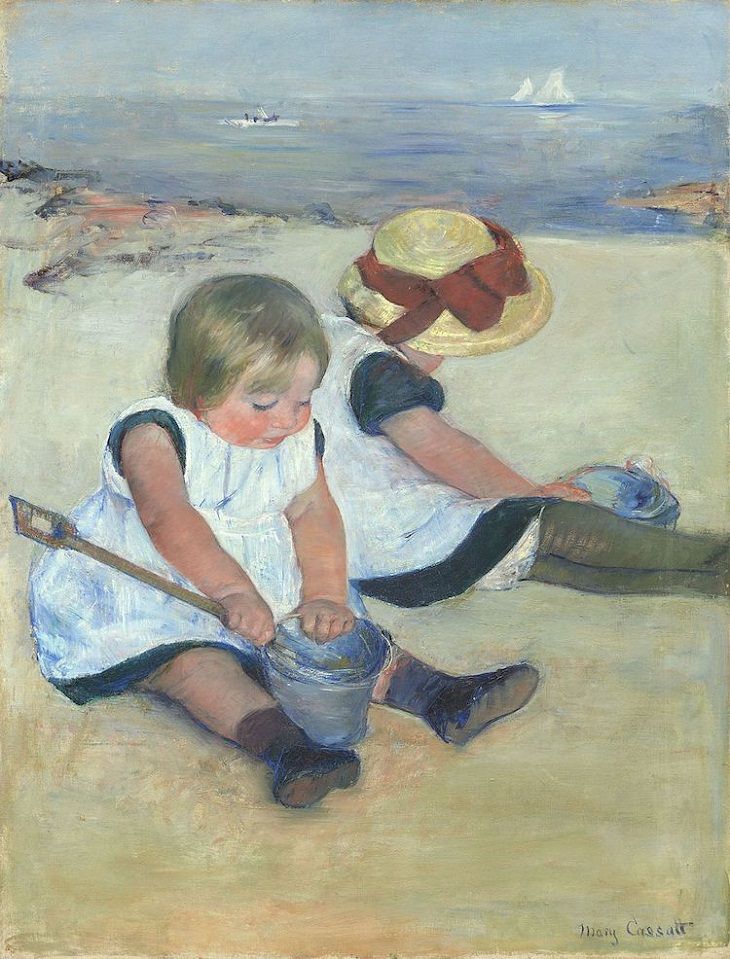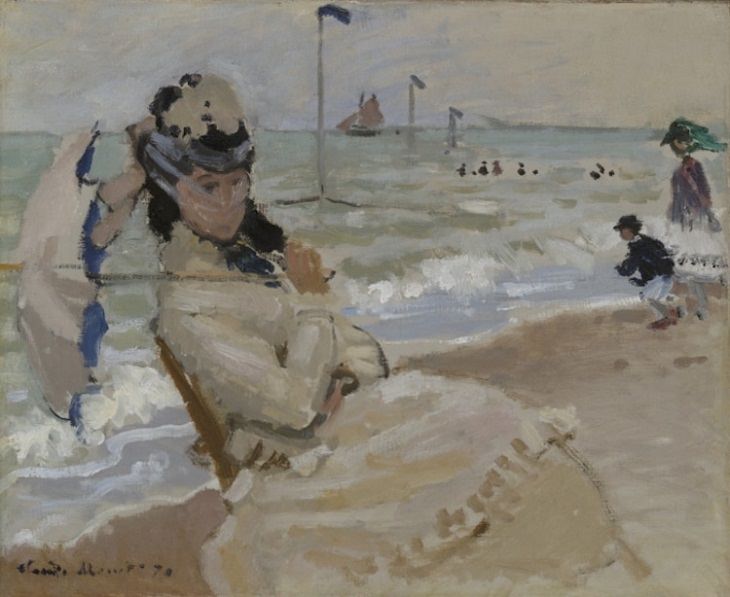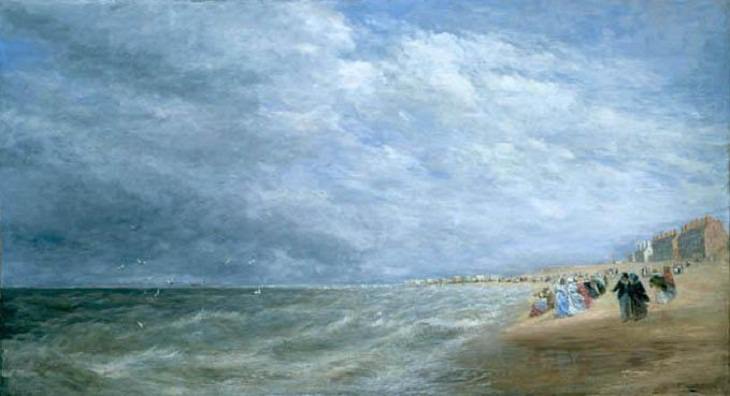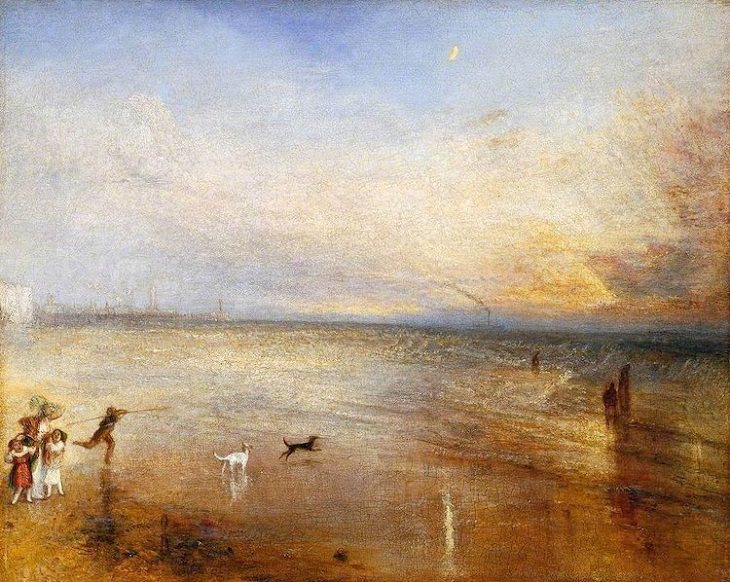Nature has always served as an inspiration to artists and is likely to continue to always do so. How can it not? There’s so much beauty, power, and purity in nature, and representing those themes through art must be quite wonderful. Famous artists have often used scenes of beautiful landscapes, mountains, forests, rivers, and even the ocean, in their paintings. Today, however, we will focus on another nature-related theme that has remained a constant and prominent arena in the history of art: beach and seashore paintings.
Spending a cozy day at the beach during summertime is a popular activity throughout the world. Beach art depictions throughout history have often captured the beauty and warmth of those summer days at the beach. What helps is that the atmosphere at a beach is usually filled with color and light and French artists from the 19th century were famous for taking their tools outdoors and reproducing the natural environments of the beach on their canvas.
Whether it's kids running around on the sand or women watching the waves calmly, classic seaside-inspired artworks have helped illustrate the colors, serenity, and warmth of the beach and seashore. And today, we will celebrate some of the best ones from renowned artists like Claude Monet, William Turner, David Cox, and more.
1. “Children Playing On The Beach” by Mary Cassatt, 1884
Mary Cassatt (1844 – 1926) was an American painter who was known for creating images of children and mothers and portraying their intimate bonds. In this particular painting, Cassatt shows two girls playing with sand on a beach. It’s a simple yet beautiful work of art that demonstrates the innocence of children wonderfully well. What stands out here is that both the young girls are deeply absorbed in their activity and don’t seem to be bothered about what’s happening around them. The coastal setting only adds to the charm of the painting.
Critics have said that the girls’ matching clothes are a tribute to the artist’s beloved sister, Lydia, who passed away in 1882.
2. “The Beach at Trouville” by Claude Monet, 1870
Claude Monet (1840 – 1926) was a distinguished French painter who is famed for giving birth to the impressionist style of painting. Monet loved capturing light and natural forms in his works and you can see that clearly in “The Beach at Trouville”. This was a special painting for the artist as it depicts his first wife, Camille, at the shore. It takes you to a warm summer day on a beach at Normandy in 1870, with a kid running around in the background, the waves splashing merrily, and the weather appearing to be breezy. The focus on lighting and shadows is apparent in the artwork and the use of strong brush strokes, a common trait in impressionist paintings, make it appear to be filled with movement.
3. “Tahitian Women on the Beach” by Paul Gauguin, 1891
French artist Paul Gauguin (1840 – 1903), who was born in Paris, arrived in Tahiti in 1891 to escape modern society and was instantly taken in with the primitive art forms there. Tahiti became a French colony in 1880 and is today a part of French Polynesia. Back when Gauguin visited the island, he was fascinated with the landscape and the unique culture and art of the indigenous people. Shortly after arriving, he began working on his painting “Tahitian Women on the Beach” which shows two native women on the beach in Tahiti during a summer day. One of the women is dressed in a traditional pareo sarong while the other can be seen in a Western-style scarf. The display of color and the easy natural style are the highlights of the painting.
4. “Rhyl Sands” by David Cox, circa 1854
English painter David Cox (1783 –1859) was renowned for his landscape watercolor paintings. However, later on in his career, he began experimenting with oil paintings, particularly ones illustrating beach scenes. One of his most famous works was “Rhyl Sands” which he made in 1854, at the age of seventy-one. It shows a day at the Rhyl beach in Wales. Cox was attracted by the complete lack of inhibition of nature and in this painting, you can see how he has juxtaposed the stormy, windy sea with smartly dressed Victorians at the shore in this delicately colored seascape.
Interestingly, Cox made different versions of the Rhyl Sands oil painting, of which only three survived and this one is known as the ‘Birmingham version’ (the other two are called ‘Tate’ and ‘Manchester’ versions). While the other two have a brighter tone, this one has gloomy clouds advancing towards the seashore.
5. “Beach Scene” by Edgar Degas, 1877
French impressionist artist Edgar Degas (1834–1917) preferred to call himself a “Realist” or “Independent” and was one of the most influential painters of his time. In “Beach Scene”, the artist has attempted to portray a simple day at a beach in Northern France. Interestingly, unlike many of his Impressionist contemporaries, Degas created this outdoor scene inside his studio. This can be sensed because the smoke from the ships in the artwork is seen billowing in opposing directions which won’t happen in reality. Some critics even say that the artist deliberately staged the image of a beach scene indoors to mock the realism of Impressionist art.
The main focus of this artwork is the maid combing the hair of a young girl. Some historians believe that Degas admired Japanese prints where women were often shown combing their hair and this painting was influenced by those artworks.
6. “The Monk by the Sea” by Caspar David Friedrich, 1808-1810
Caspar David Friedrich (1774 - 1840), a German landscape painter of the nineteenth century, was greatly inspired by nature and that reflected in his paintings of mist, fog, and darkness. In “The Monk by the Sea”, Friedrich wanted to show a lone figure, a bareheaded monk in this image, standing against powerful and dramatic skies on the seashore. The artist worked for two years on this painting and it went on to become his most celebrated work. The powerful effect of the painting shocked Friedrich’s contemporaries as the contrast of the vast scale of the landscape with the monk’s tiny figure had rarely been done so intensely before. The beach and the landscape almost appear to be an abyss that’s all set to consume the monk but he seems unperturbed, quietly looking ahead.
7. “The New Moon” by William Turner, 1840
Few artists illustrated 19th-century life as sensitively as Joseph Mallord William Turner (1775 –1851) did. The English Romantic landscape painter and watercolorist captured the atmospheric beauty of the era through some lovely artworks and "The New Moon" —also known as, “I’ve lost My Boat, You shan’t have Your Hoop”— was one of his most popular works. Back then, Turner’s contemporaries mocked the subtitle of the painting but it perfectly grabs its mood which shows kids and dogs playing on the shore.
Turner, who loved working outdoors, is said to have painted this scene quickly the moment he noticed it in front of him. The painter had a fondness for children and it reflects wonderfully well in this illustration.
Share these lovely paintings with your loved ones!







